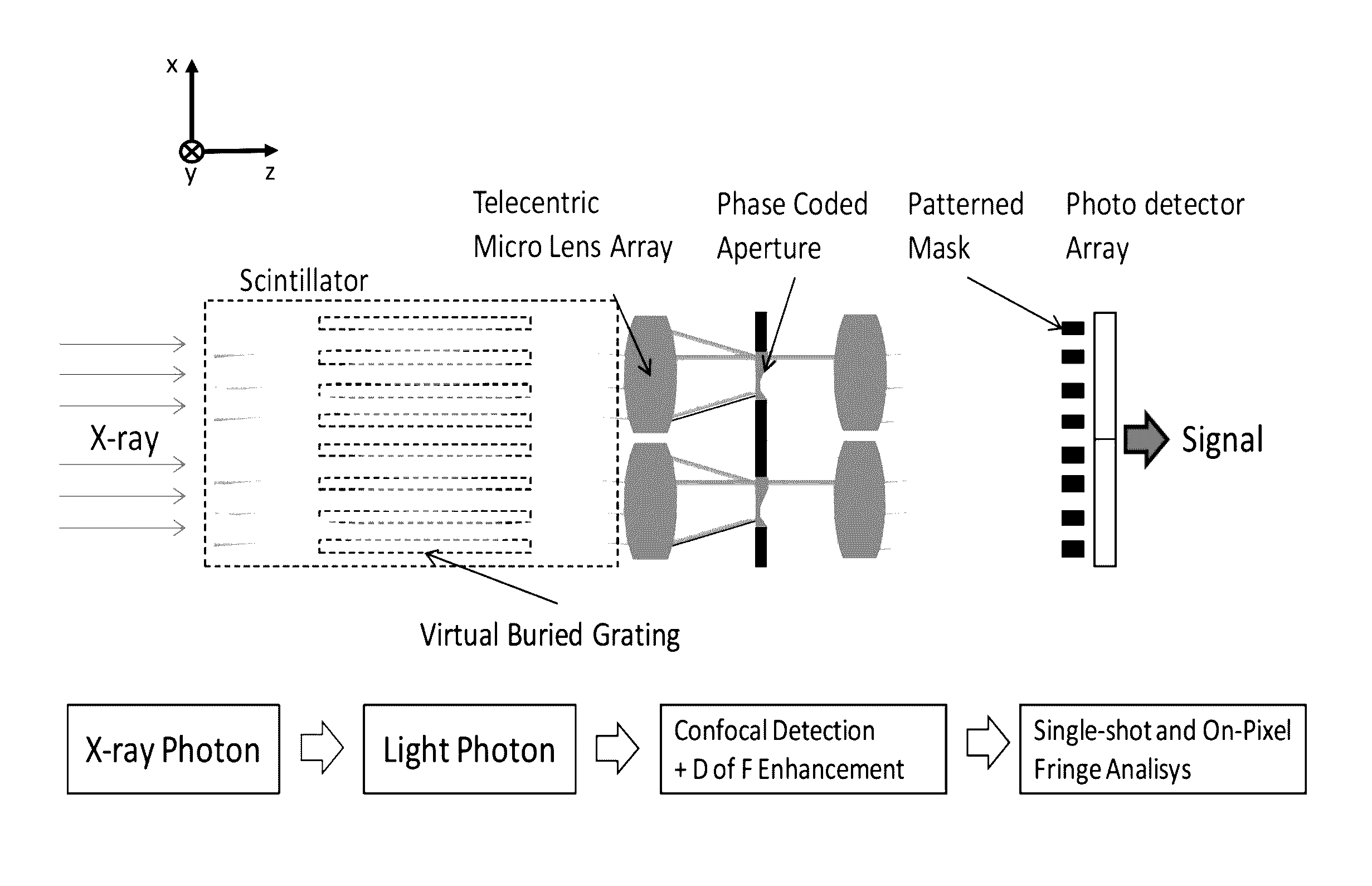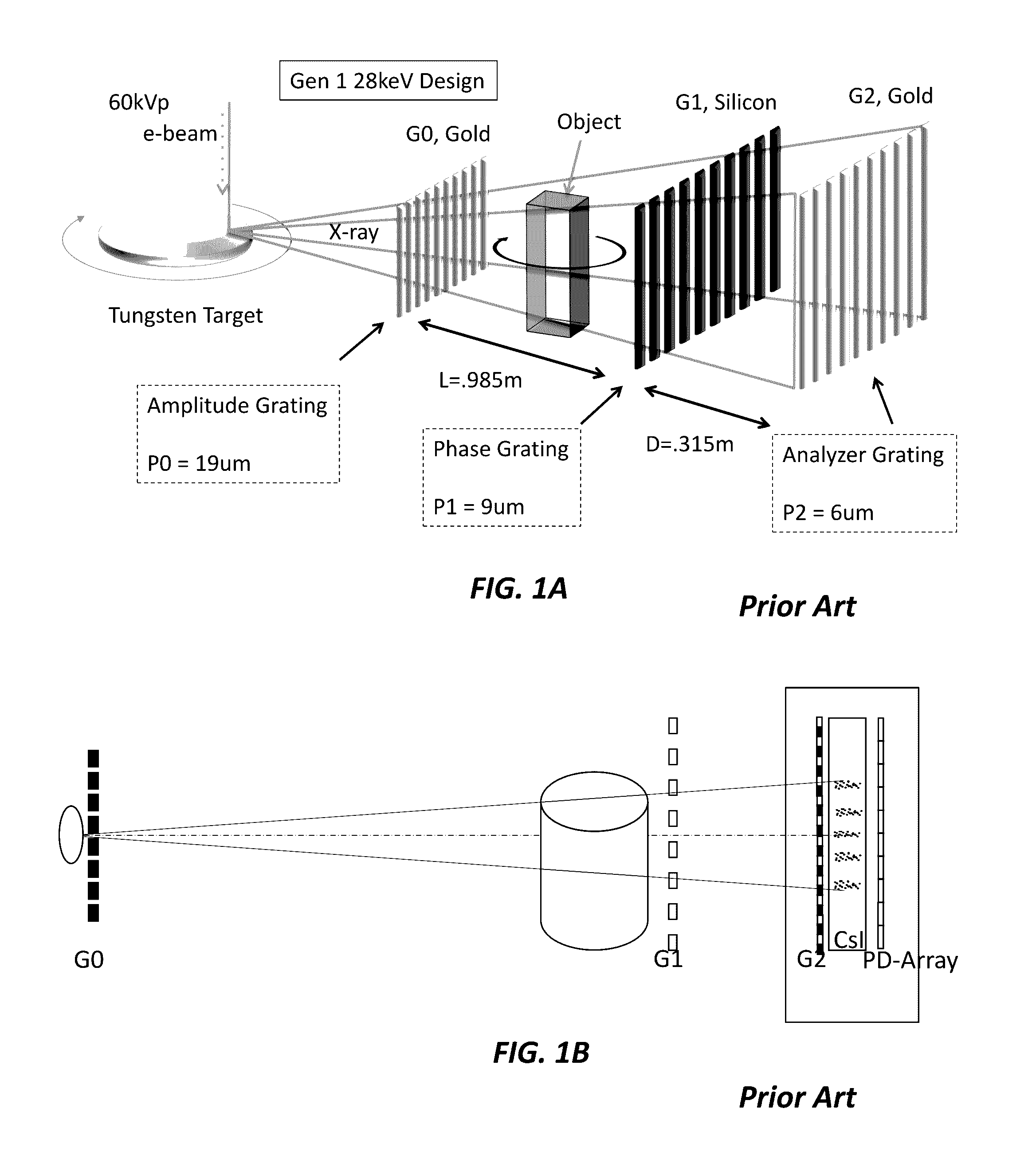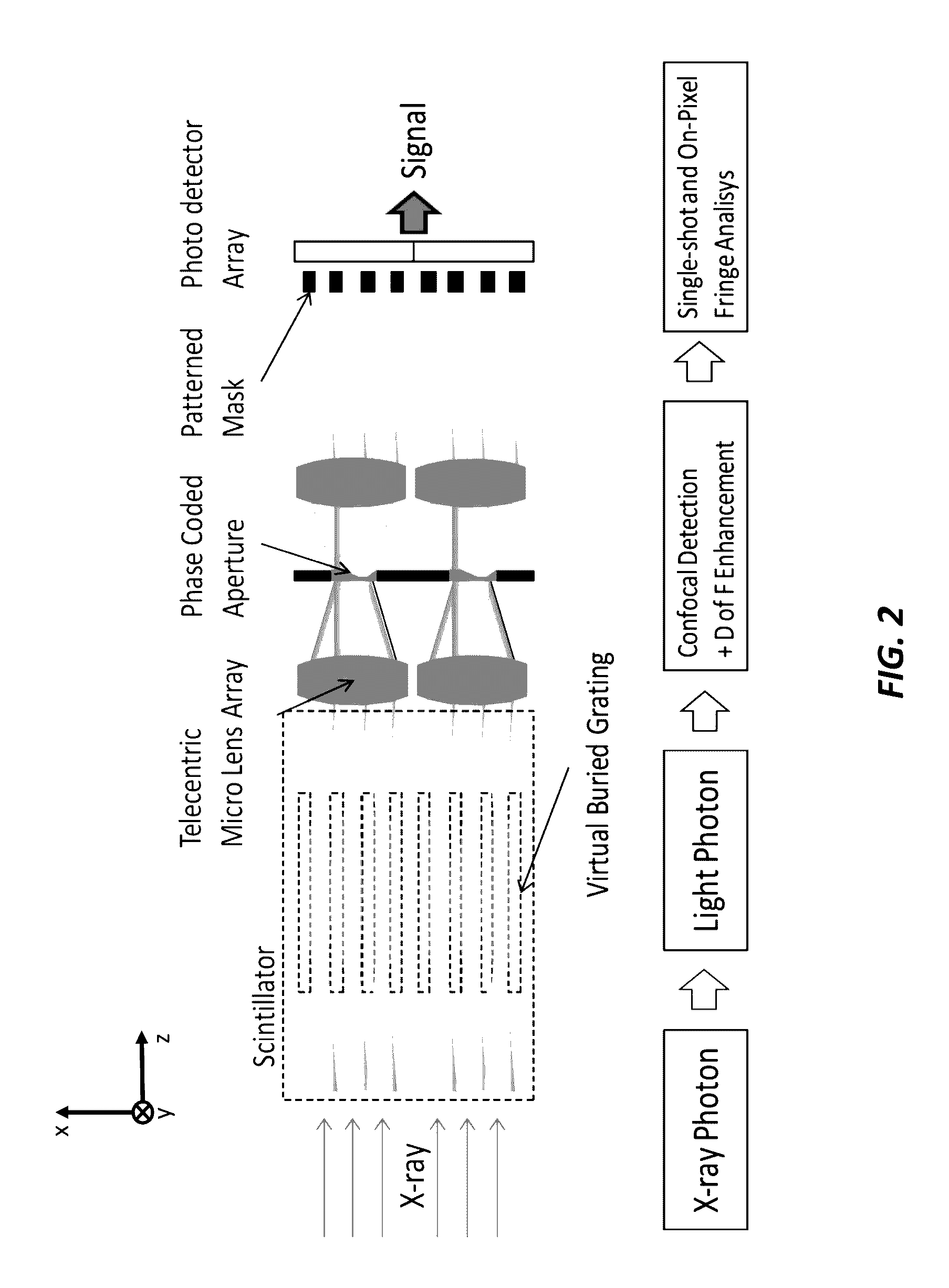Photonic-channeled x-ray detector array
a detector array and photonic channel technology, applied in the field of xray detection, can solve the problems of inability to achieve coherent light sources in the visible domain, limited x-ray optics variation, and inability to achieve coherent light sources such as synchrotron radiation light sources and x-ray lasers
- Summary
- Abstract
- Description
- Claims
- Application Information
AI Technical Summary
Benefits of technology
Problems solved by technology
Method used
Image
Examples
Embodiment Construction
[0025]To overcome such drawbacks of the detector in conventional Talbot X-ray fringe detection system, especially for high X-ray photon energy applications, the current invention provides a Photonic-channeled X-ray Detector Array (PcXDA) that eliminates the analyzer grating from the system, and enables for motionless fringe detection having a large FOV. FIG. 2 shows a schematic diagram of the PcXDA, according to one embodiment of the invention.
[0026]In a conventional X-ray detector, the X-ray fringe is sampled by the Au / Si G2 grating, where the detection of the fringe distortion is carried out in the X-ray domain. The scintillator converts the sampled X-ray signal to visible photon. The photon is captured by and is transmitted through a fiber optics plate (FOP). Finally photo detector array integrates the photon signal over the region of the photo detector.
[0027]The PcXDA performs conversion of X-rays to visible photons by a scintillator. However, the detection of the fringe distort...
PUM
 Login to View More
Login to View More Abstract
Description
Claims
Application Information
 Login to View More
Login to View More - R&D
- Intellectual Property
- Life Sciences
- Materials
- Tech Scout
- Unparalleled Data Quality
- Higher Quality Content
- 60% Fewer Hallucinations
Browse by: Latest US Patents, China's latest patents, Technical Efficacy Thesaurus, Application Domain, Technology Topic, Popular Technical Reports.
© 2025 PatSnap. All rights reserved.Legal|Privacy policy|Modern Slavery Act Transparency Statement|Sitemap|About US| Contact US: help@patsnap.com



